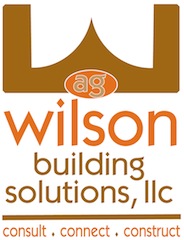 Things are definitely heating up through out my territory. Many of my distributors have more RFQs than they can handle, having to turn some down. It’s a refreshing problem to have to say the least! There is even talk of margins increasing ever so infinitesimally.
Things are definitely heating up through out my territory. Many of my distributors have more RFQs than they can handle, having to turn some down. It’s a refreshing problem to have to say the least! There is even talk of margins increasing ever so infinitesimally.
With the state of the economy still in question it is very important to make sure you are making the right choices as to which projects to bid and which ones to pass on.
I know right, duh. I know that it sounds like a no-brainer but I also know that when we get busy we have the tendency to be reactionary in lieu of proactionary being proactive.
One of the ways to make sure you are selecting the right projects is to be intimately familiar with your bid-hit ratio.
Another no-brainer right? But I am willing to bet the majority of you that are reading this do NOT know your bid-hit ratio. I know this because I know human nature. Knowing your bid-hit ratio is truly a proactive measure and we are too busy to be proactive! I can also share that in my 17 years of working on the distribution level, this statistic was never stressed.
I am assuming that everyone knows what the term bid-hit ratio means. For those of you that may not, it is the relation of the total amount of bids submitted to the total number of bids you successfully won. For example, if your bid-hit ratio is 4:1 it means that you secure one out of every four projects quoted.
The benefits to knowing your bid-hit ratio are many. For one, as the saying goes, you can’t improve what you don’t measure. Your bid-hit ratio is a measure of your successful bidding process. Studying this analysis can reveal what type of projects your sales force should focus on and ultimately improve your odds
You should be asking the following questions about the projects you have been awarded.
- Project Type – Is there a certain project type that you were successful on more than others? Public or public? Hotel or Hospital?
- Project Size – Do you have a higher success rate with small, medium or large projects?
- Specific Product or Manufacturer – Did the winning projects have a common product or manufacturer?
- Same Contractors – Was there a high occurrence of winning bids with the same contractor?
- Estimator – Do you have a specific estimator that is more successful?
You can also reverse it and ask the same questions about the projects you have lost to learn which ones are a waste of your valuable time. Time is your most precious commodity. When it gets busy you want to make sure you are operating as efficiently as possible. Knowing the answers to the above questions will help you narrow down that stack of RFQs on your desk and make sure you are focusing on opportunities that will bring you the most success.
It will also help to know how your company measures to national averages.
 I found the following information on George Hedley’s website. George Hedley is owner of Hedley Construction and Development, Inc. He shares his business expertise and leadership style through his writing, speaking and coaching services.
I found the following information on George Hedley’s website. George Hedley is owner of Hedley Construction and Development, Inc. He shares his business expertise and leadership style through his writing, speaking and coaching services.
Click on his pic on the left to go to his article on the importance of knowing your bid-hit ratio.
See how you compare to the averages observed around the country.
General Contractors Bid-Hit Ratio
– Public Works 6 : 1 to 10 : 1
– Private Bid Work 4 : 1 to 6 : 1
– Negotiated Work 2 : 1 to 4 : 1Subcontractors Bid-Hit Ratio
– Public Works 7 : 1 to 11 : 1
– Private Bid Work 4 : 1 to 6 : 1
– Negotiated Work 3 : 1 to 4 : 1
Here are links to some great articles I found expressing how important it is to know your bid-hit ratio.
Construction Accounting Article – bid-hit ratios are The Secret to your success
Improve Your Bid-Hit Ratio: Top 5 Essentials of a Winning Bid Strategy
Import Your Bid-Hit Ratio: Try These Strategies to Save Time
You are NOT too busy to be proactive, kick it in gear! Have a great week!



Follow Me!